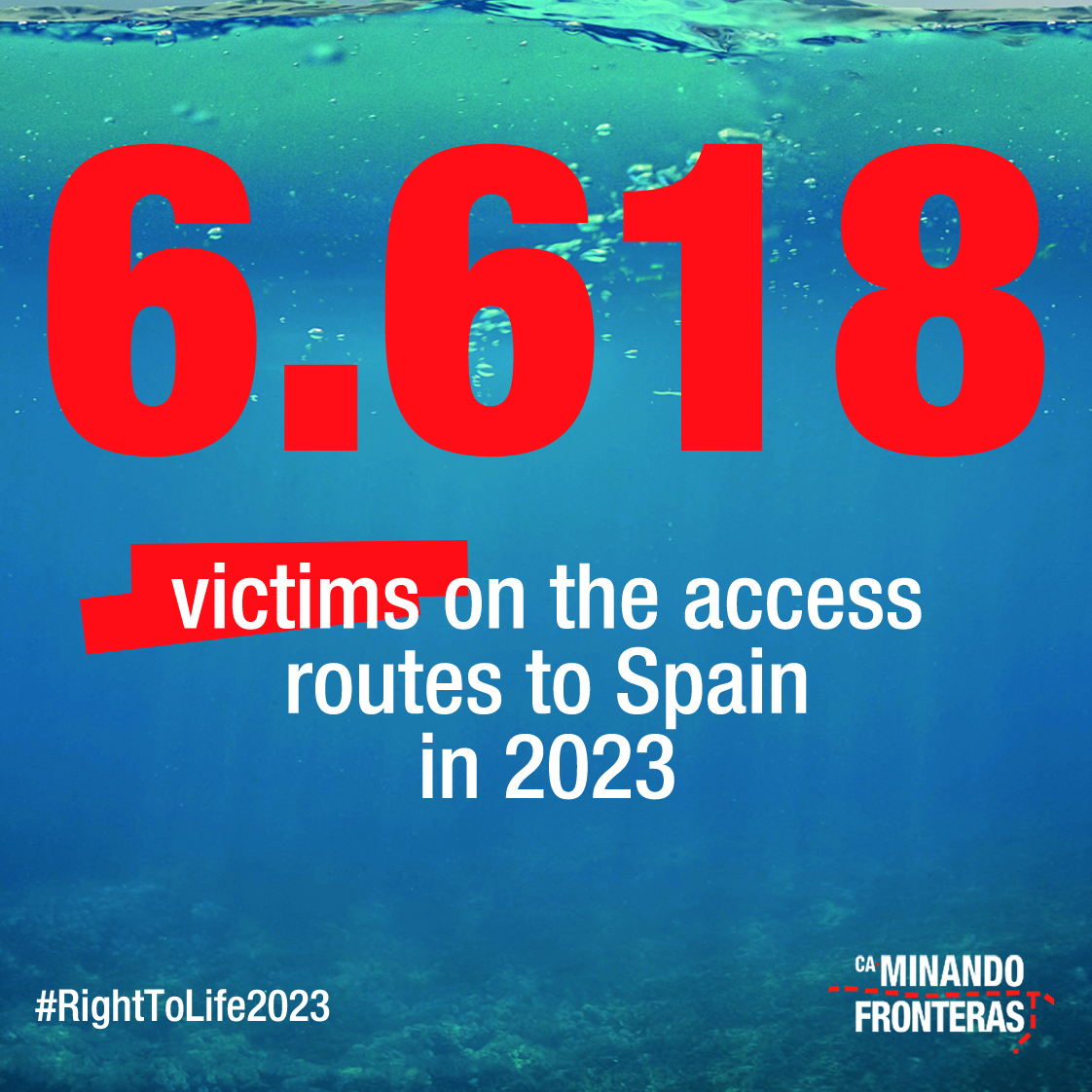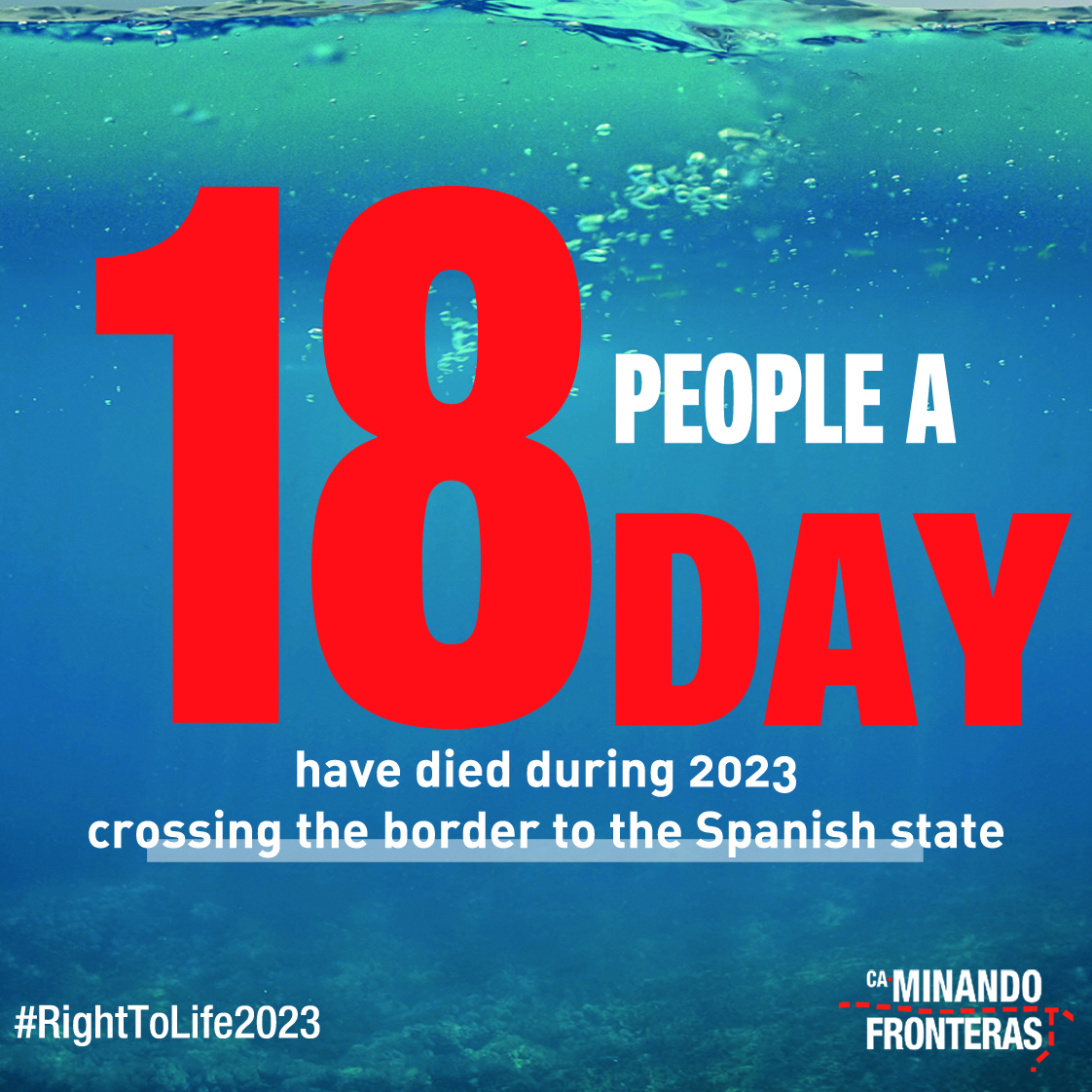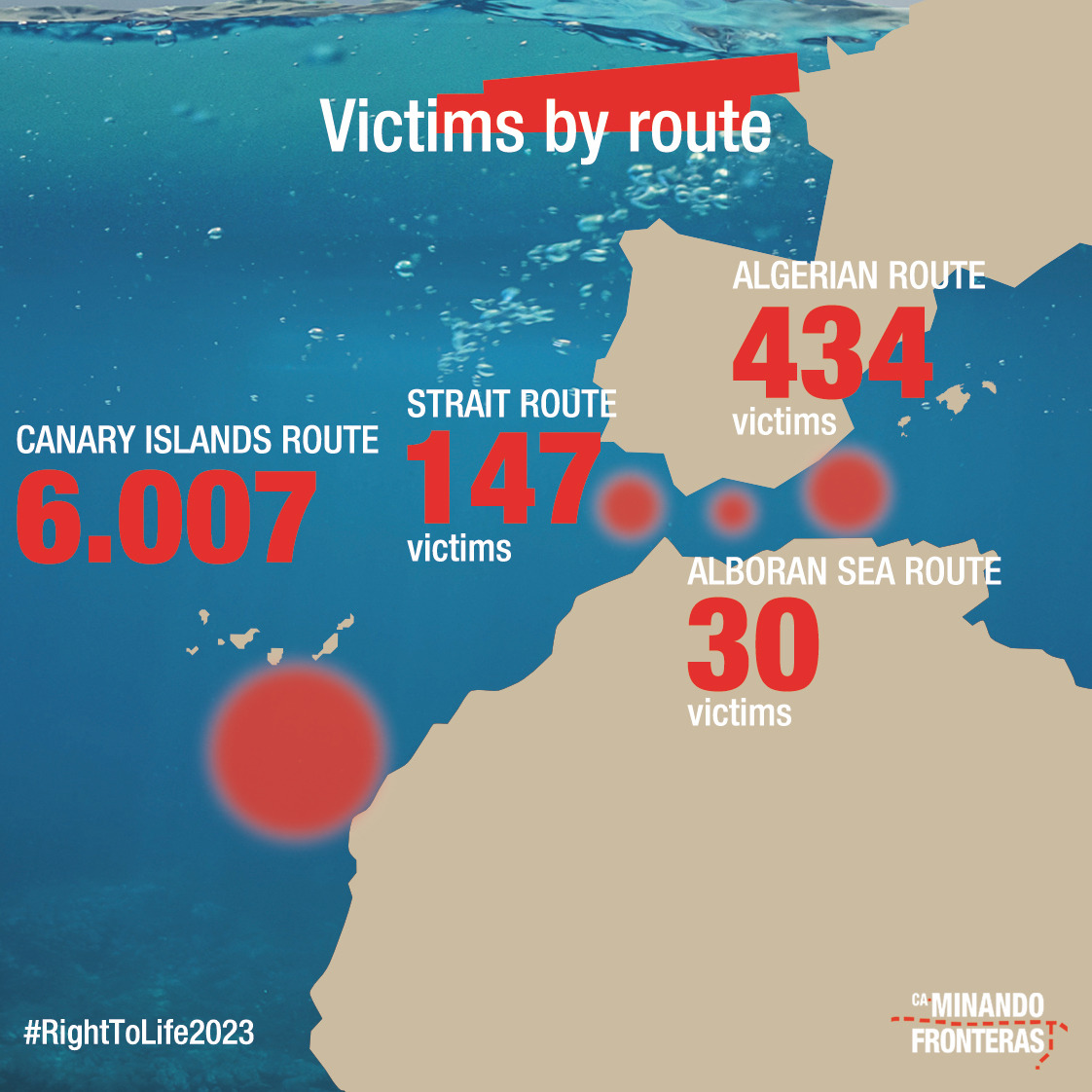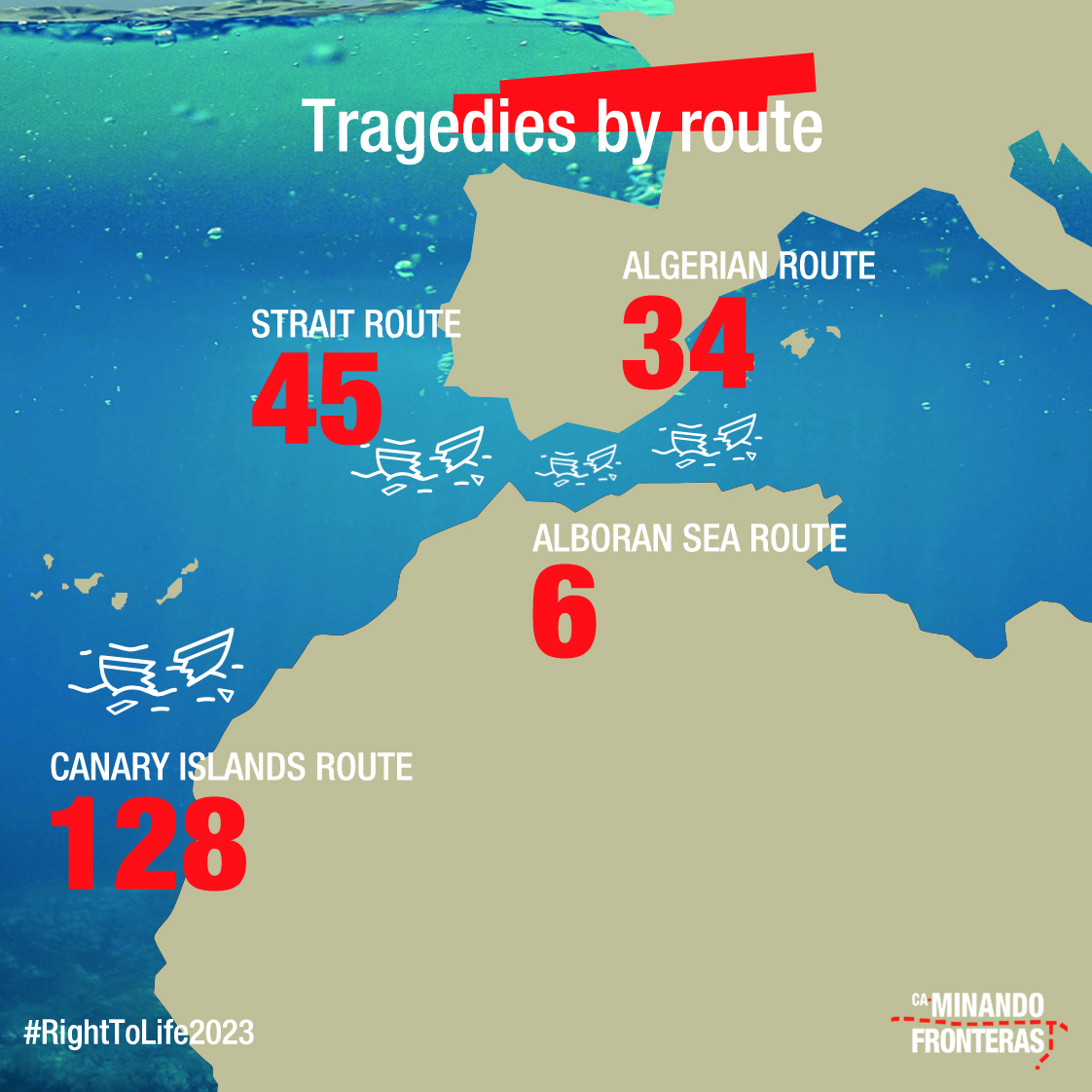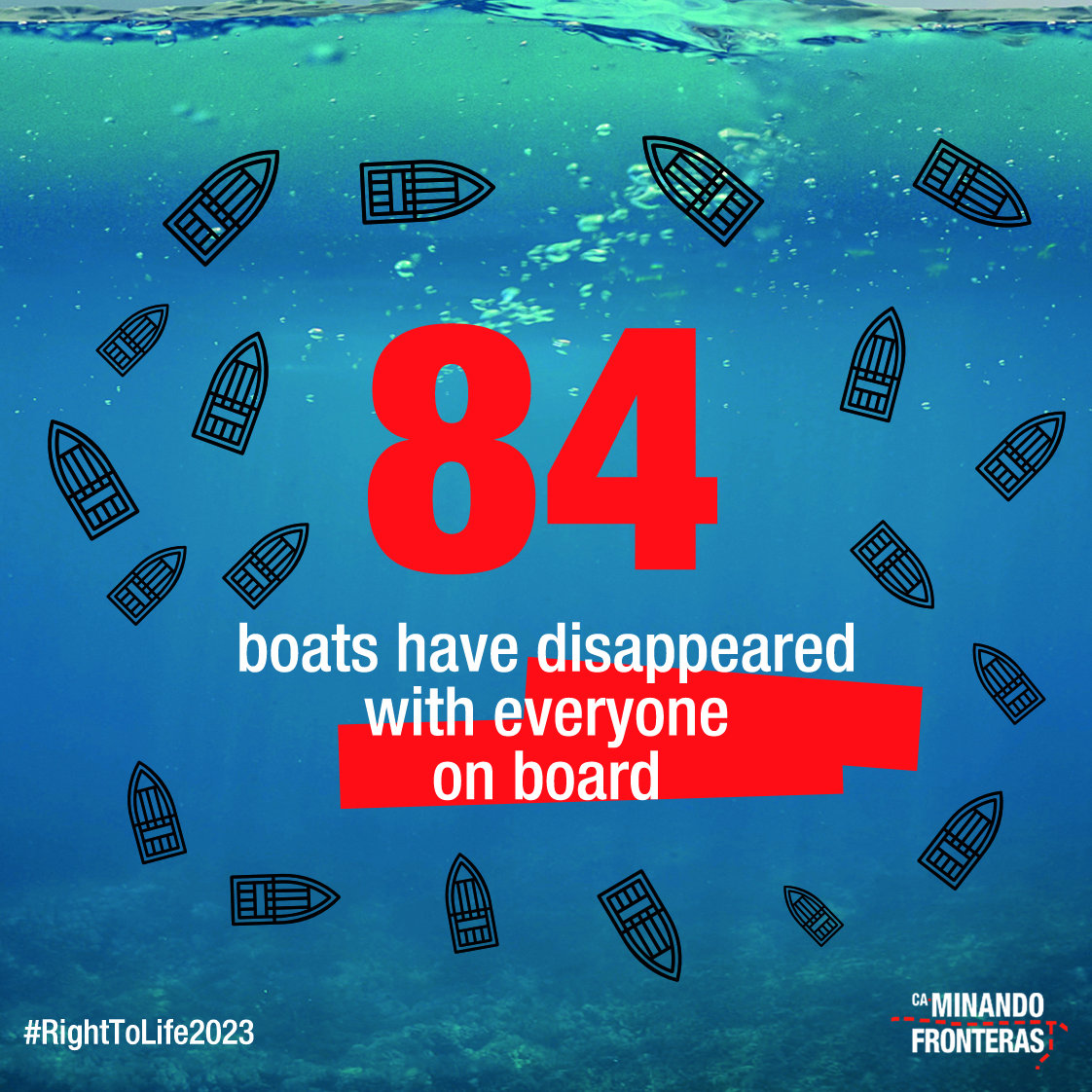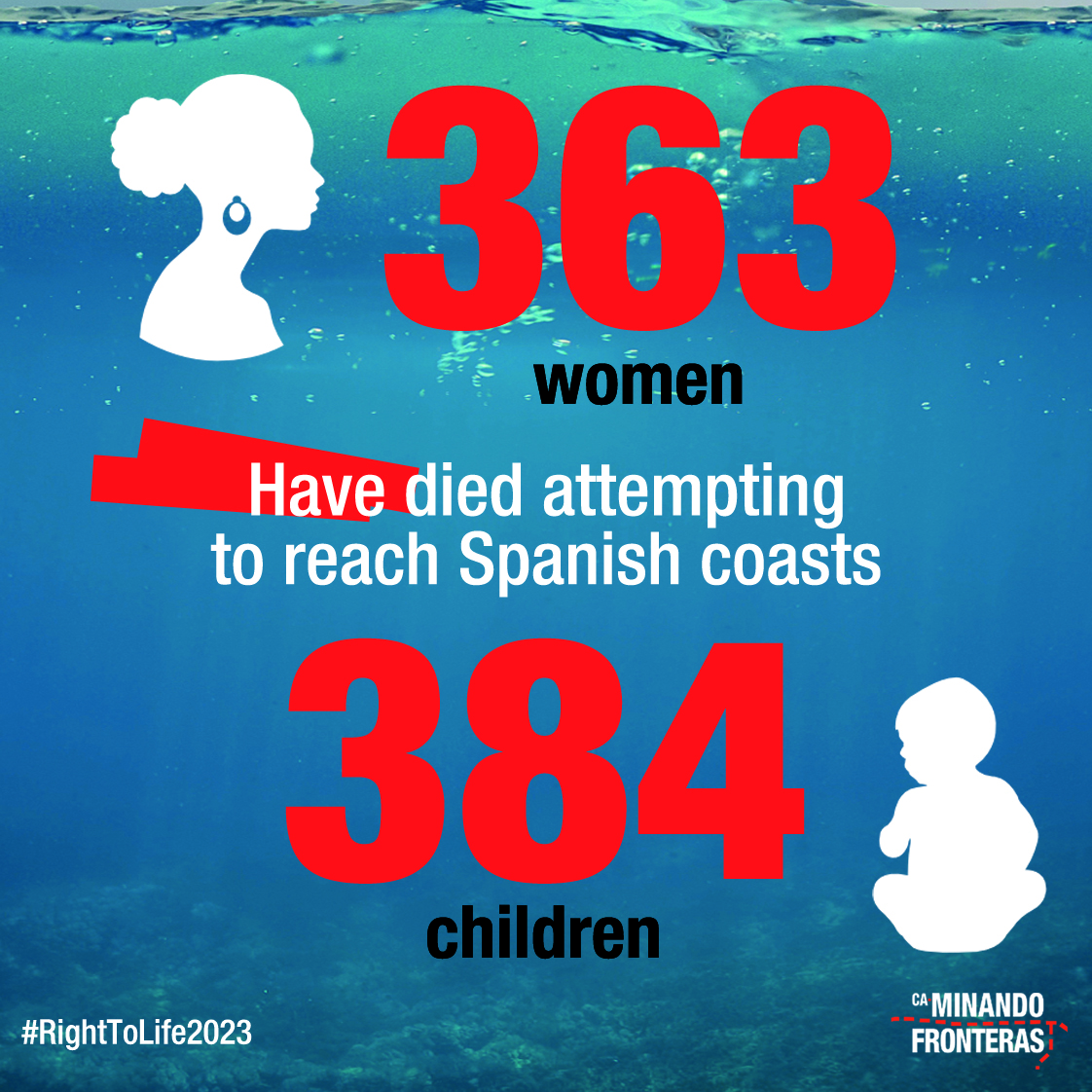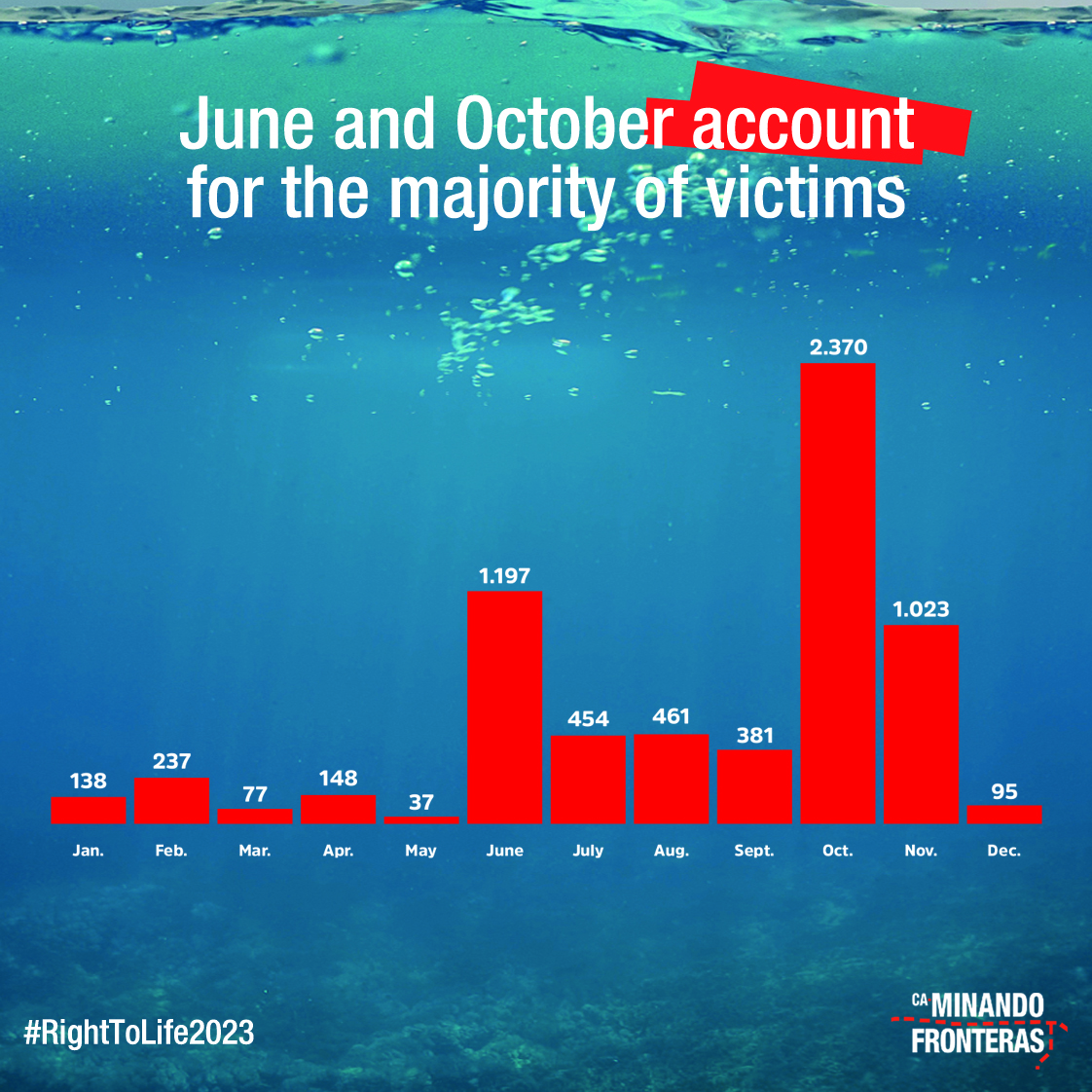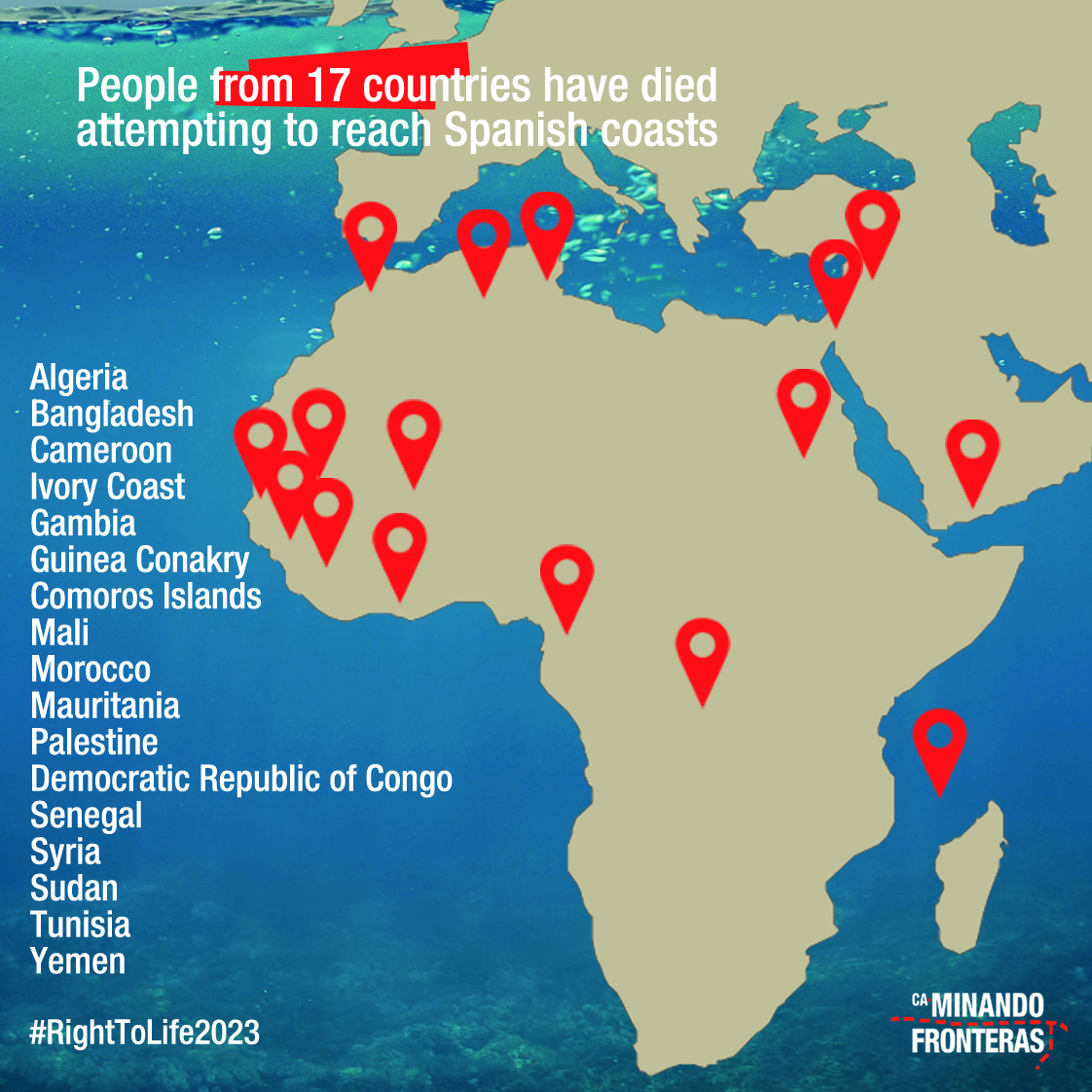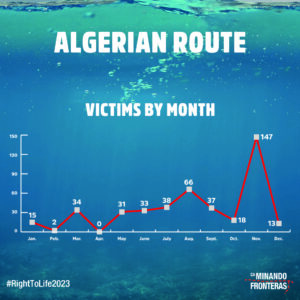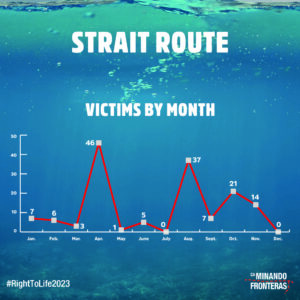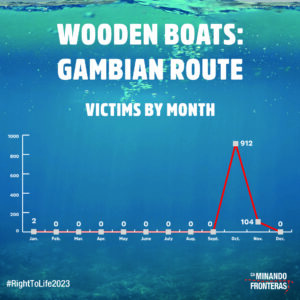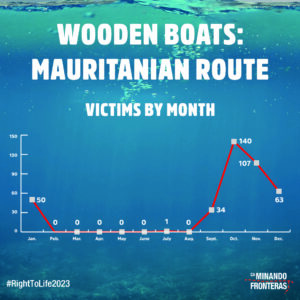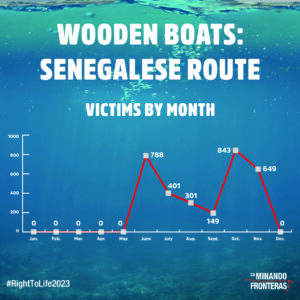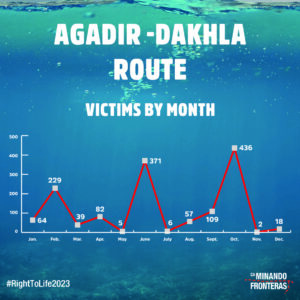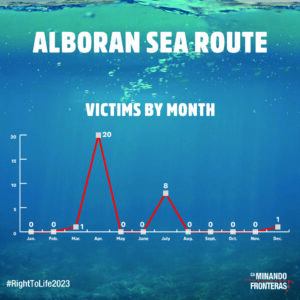The data presented below results from exhaustive monitoring carried out 365 days a year by our Collective within our Human Rights Observatory framework. Migrant communities, rescue services, family networks, and human rights defenders on the ground collect, compare, and systematize this necessary information.
In 2023, 18 people died every day on the different migratory routes to Spain. The Monitoring theRight to Life report, which collects data on the victims of a necropolitics that is increasingly cruel and aggressive towards human rights, has found that 2023 was the deadliest year on record. As many as 6,618 people lost their lives on the Euro-African Western Border, including 363 women and 384 children.
The Canary route, across the Atlantic Ocean, is once again the deadliest migratory region in the world. The increase in departures from the furthest places along the route, such as Mauritania, Senegal, and Gambia should be highlighted this year. Specifically, from June onwards, the increase in the number of canoes from Senegal shows the population’s exodus caused by the country’s great social and political instability.
The report analyses in detail the different migration routes in the Atlantic from these countries, not forgetting the outflows of people in the coastal areas between Agadir and Dakhla. Our report has also continued to pay attention to the victims in the Mediterranean area, including the Algerian route, Alboran and the Strait of Gibraltar.
Our Human Rights Observatory, through its research team, has analysed the data presented in this report to define the causes of the increase in deaths. Among the most serious causes are the prioritization of border control over the duty to rescue, the failure to activate search and rescue resources with the necessary urgency, increase in ineffective passive search methods, the impact of the externalization of borders with third countries and the reduction of resources for the protection of life.
The figures in this report could not be more alarming, and the increasingly lethal migration control practices that we see at the Western Euro-African Border are also observed at other European borders. These data are, therefore, intended to inform truth processes driven by migrant communities and victims’ families in the face of necropolitics. This report and those that preceded it are also steps towards the recovery of the memory of the victims and should be used in advocacy actions that fight against the politics of death at the borders.
Download the report in English here. Go to the bottom of the page for the French and Spanish versions.
